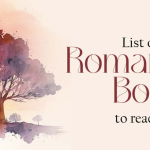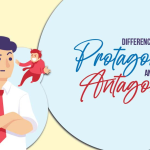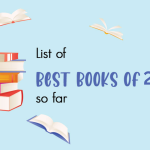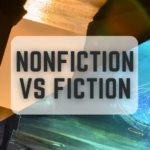Thinking to publish a Korean Book? Korean, or natively known as Hangul, is one of the most popular East Asian languages as observed in 2021–22. The culture makes the language rich and polite as we dive deep into the history of the language as well as how it came into existence. Modern Korean is descended from Middle Korean, which is descended from Old Korean, which is descended from the Proto-Korean language, which is thought to be its linguistic ancestor.
According to Whitman (2012), proto-Koreans, who were already present in northern Korea, expanded into the southern part of the Korean Peninsula around 300 BC and coexisted with descendants of Japonic Mumun cultivators (or assimilated them). Both had an impact on one another, and a later founder effect reduced the internal diversity of both language families.
Over 70 years of separation, North-South differences in standard Korean have developed, including variations in pronunciation and vocabulary choice, but these minor differences can be found in any of the Korean dialects, which are still largely mutually intelligible. Because of the long period of separation between the two countries, the North and South Korean languages have evolved to have distinct vocabulary, pronunciation, and even grammatical rules.
The language and the way it is written are pretty much similar to the human anatomy when it is spoken and in nature.
It is said that there are many similarities found in the vocabulary of the Korean and South Indian languages. The history talks about a Tamilian princess (Ayuta Kingdom of the Pandian Empire) named Seembavalam, aka Heo Hwang Ok, being married to the King of Gaya. She was married at the age of 16 and bore 10 sons with her husband. While there is no strong evidence of whether she was from India itself, many of the words are quite similar. For example,
- Grass: Pronounced Pul (புல்) in Tamil, Pol (풀) in Korean
- Day: Pronounced Nal in Tamil (நாள்) and Korean (날), both
- Little bit: Pronounced Koñcam Koñcam (கொஞ்சம் கொஞ்சம்) in Tamil and Jogeum Jogeum (조금 조금) in Korean
- Mother: Pronounced Amma (அம்மா) in Tamil, Omma (엄마) in Korean
- Sister/sister-in-law: Pronounced Anni in Tamil, Eonni (언니) in Korean
- Must/have to: Kattayamaka (கட்டாயமாக) in Tamil, Kachoyham in Korean
- One: Onnu (ஒண்ணு) in Tamil, Eonnu (어느) in Korean
Although some linguists have proposed that Korean belongs to the “Altaic” language group and is thus related to languages such as Turkish and Finnish, this theory has been widely debunked. Korean is more commonly classified as a language isolate, which means it has no significant connection to any other existing language on the planet.
Korean, like Japanese, has a complex system of honorifics, with different verb endings and vocabulary depending on your relationship with the person you’re addressing. The highest honorific form in North Korea is reserved for the Great Leader, who has his own verb ending (“op”).
- Korean literature is the body of literature created by Koreans, mostly in Korean but occasionally in Classical Chinese. It was written in Hanja for much of Korea’s 1,500-year literary history. It is commonly divided into two periods: classical and modern, though this distinction is not always clear. Korea is the birthplace of the world’s first metal and copper type, the earliest known printed document, and the world’s first featural script.
- Classical Korean literature has its origins in traditional Korean folk beliefs and folk tales. There are four major traditional poetic forms: hyangga (native songs); byeolgok (special songs); or changga (long poems); sijo (current melodies); and gasa (verses).
- Korean prose literature is divided into three categories: narratives, fiction, and literary miscellany. Myths, legends, and folktales found in written records are examples of narratives. The two great historical records compiled in Classical Chinese during the Koryo era are the Samguk sagi (1146; “Historical Record of the Three Kingdoms”) and Samguk yusa (1146). (1285; “Memorabilia of the Three Kingdoms”).
- The most important myths are those about the Sun and Moon, Tangun’s founding of Korea, and the lives of the ancient kings. The legends deal with place names, personal names, and natural phenomena. Animal stories, ogres, goblins, and other supernatural beings, kindness rewarded and evil punished, and cleverness and stupidity are among the folktales.
- Korean fiction can be divided into several categories. First, there is Korean fiction written in Chinese and Korean fiction written in Chinese. Second, there are one-volume works, “medium” works of about ten volumes, and long works of more than ten volumes. Third, there are works by yangban writers as well as works by common writers.
- The literary miscellany is a collection of yangban doodles on four broad topics: history, biography, autobiography, and poetic criticism.
- The first known classical work of Korean fiction is Geumo Sinhwa (金鰲新話 금오신화 New stories from Mount Geumo) by Kim Si-seup (김시습).
- Modern Korean literature evolved gradually as a result of Western cultural contacts based on trade and economic development. John Bunyan’s Pilgrim’s Progress (in Korean: 천로역정 Cheonno-yeokjeong), translated by James Scarth Gale, was the first printed work of fiction in Korean (1893).

Tips to Publish a Korean Book-
- Your manuscript is the key element of your book.
Write your script and understand that what all you’ll need.
For example – if you are writing in English but you want to target the Korean audience, get your script translated which will help you to achieve your goal. You need to make sure that the essence is intact while the translation is being done. There could be Korean Publishing houses or Global Publishing Houses that offer these services. - Editing is the groomer for your manuscript.
Make sure you edit your manuscript thoroughly because flaws and loophole cannot be accepted. If you are getting it translated to Korean language – make sure that all the placements are correct because one stroke of line can change the meaning of your story. - Grab as many ideas as you can to design your cover page.
Even before reaching out to a Korean Book Publisher, having original ideas will be a good kickstart. It also shows that you are passionate about your project. - Research about the Publishing house you will go with.
There are a million Korean publishing houses but which will suit you and your budget is what you need to keep in mind. Gather information about different Korean publishing houses who support and understand the need of your story. Narrow it down to the best three. - Contact the final publishing houses.
Have a conversation and understand how they work. Transparency is what you need – companies that would include you in your publishing process is what you need - Finalize your choice and start with your dream project.
Get a full experience of being an author and get your printed book in your hand at the end. - Don’t rely your promotions and marketing on your publishing house.
Have a plan of your own. It is your book. Create a buzz on your platforms, give out sneak peaks for people to get curious about what you are going to publish and have patience. Being a bestselling author and having a bestselling book takes time. Because unfortunately, we don’t have a fairy godmother. Haha.
Five famous Korean Books of all time-
- Kim Jiyoung, Born 1982 by Cho Nam-joo
- Violets by Kyung-sook Shin
- I Want to Die But I Want to Eat Tteokbokki by Baek Sehee
- The Vegetarian by Han Kang
- Drifting House by Krys Lee
- The Naked Tree by Wan Suh Park
Many people aspire to be authors, and success in the worldwide market is a significant achievement in and of itself.
BlueroseONE assists emerging writers towards being noticed in both national and international markets. We publish in regional and worldwide languages and provide a variety of adaptable services in this regard.
Read: See what are the benefits of self-publishing in India.
















